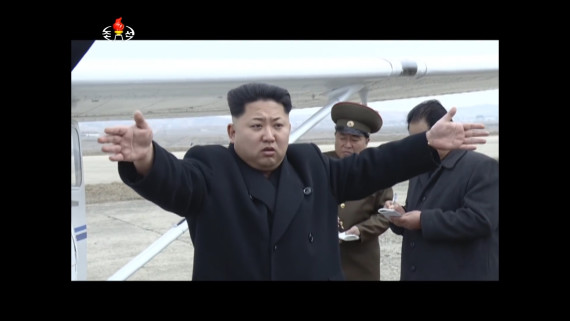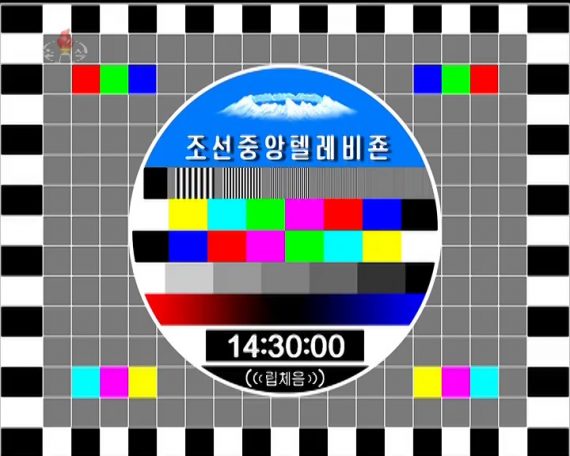North Korea’s main TV channel, Korean Central Television (조선중앙텔레비죤), debuted a substantial technical upgrade on December 4 when it switched to widescreen, high-definition broadcasting.
Until Monday, North Korean TV had broadcast via satellite to Asia on a high-definition, widescreen channel, but programming in that format appeared for only a few seconds at the start and end of daily broadcasting. Much of the rest of the programming was standard-definition 4:3 aspect ratio video with two black bars down the side of the picture, like this:

Standard definition content as broadcast on a widescreen channel by KCTV
Over the last few years, the TV station has been capturing more high-definition content but something in the production chain has resulted in that going out within the standard definition video window with black bars all around the image, like this:

Pictures of Kim Jong Un were shot in high-definition widescreen, but aired within a standard definition window.
But that’s all changed now with widescreen, high-definition becoming the default. The TV station has also added stereo sound (denoted by ‘립체음’ in the testcard below).
So for viewers of KCTV’s widescreen satellite channel, the norm is now this:

Announcer Ri Chun Hee in a widescreen broadcast by KCTV on December 4, 2017.
On Monday, the TV station debuted a new testcard, new graphics for the opening and closing of broadcasting, and updates throughout the broadcast day. The channel bug in the top left corner is also slightly more muted.

A testcard broadcast by Korean Central Television from December 4, 2017.
The technical upgrade can be traced back to 2012 when China Central Television provided KCTV with about $800,000 of broadcasting equipment to help upgrade its antiquated transmission and production system. KCTV switched its Thaicom-5 satellite feed to Asia to high-definition in 2015 but, as mentioned above, filled it mostly with standard definition content.
Despite Monday’s upgrade for views in Asia, the KCTV satellite feed via Intelsat-21 for Europe and the Americas remains in 4:3 standard definition.
As for viewers within North Korea, it’s not immediately clear what they are seeing. The country launched digital TV broadcasting in late 2012, according to domestic media. Flat-panel, widescreen TVs are routinely seen in state TV images of electronics stores and while the majority of TVs in the country are probably much older models, the upgraded broadcasting is likely being seen within the country.





